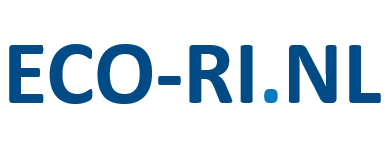Living Lab
Besides, it is an important place for education of elementary school pupils to higher education students.

Details
- Infrastructure type
- Ecotron outdoor
- Institute
The facility
The Living Lab is an outdoor lab, suited for research on the consequences of pollution from pesticides, fertilisers, microplastics, advanced materials and invasive species such as crayfish. It consists of 32 ditches (8 meter length, 50 cml width, 30-60 cm depth)that are allowed to develop natural communities so that actual biodiversity and ecosystem functionality impacts can be assessed. The ditch systems are connected o a watershed that allows natural colonization of organisms into the test ditches (=cosms).
Besides, it is an important place for education of elementary school pupils to higher education students.
Research topics
Biodiversity, pollution, microplastics, fertilisers, pesticides, flora, fauna, invertebrates, education, aquatic ecology, ecotoxicology, ecosystem functioning, eDNA/eRNA dynamics
References
Barmentlo, S.H., Schrama, M., Cieraad, E., de Snoo, G.R., Musters, C.J.M., van Bodegom, P.M. and Vijver, M.G. (2025). Networks in Aquatic Communities Collapse Upon Neonicotinoid-Induced Stress. Ecology Letters, 28, e70121. https://doi.org/10.1111/ele.70121
Barmentlo, S. H., Schrama, M., De Snoo, G. R., Van Bodegom, P. M., van Nieuwenhuijzen, A., & Vijver, M. G. (2021). Experimental evidence for neonicotinoid driven decline in aquatic emerging insects. Proceedings of the National Academy of Sciences, 118(44), e2105692118. https://doi.org/10.1073/pnas.2105692118
Beentjes, K. K., Barmentlo, S. H., Cieraad, E., Schilthuizen, M., van der Hoorn, B. B., Speksnijder, A. G., & Trimbos, K. B. (2022). Environmental DNA metabarcoding reveals comparable responses to agricultural stressors on different trophic levels of a freshwater community. Molecular ecology, 31(5), 1430-1443. https://doi.org/10.1111/mec.16326
Nederstigt, T. A., Peijnenburg, W. J., Schrama, M., van Ommen, J. R., & Vijver, M. G. (2022). Impacts of a novel controlled-release TiO2-coated (nano-) formulation of carbendazim and its constituents on freshwater macroinvertebrate communities. Science Of The Total Environment, 838, 156554. https://doi.org/10.1016/j.scitotenv.2022.156554
Dercksen, J. A., Schrama, M. J., Beentjes, K. K., Bastiaans, B. N., Blom, R., van Roon, A., Lindenburg, P. W. & Trimbos, K. B. (2025). Invasive Crayfish: Drivers or Passengers of Degradation in Freshwater Ecosystems?. Environmental DNA, 7(2), e70062. https://doi.org/10.1002/edn3.70062
Van der Plas, M., Nederstigt, T. A. P., Trimbos, K. B. Didaskalou, E. A. & Vijver, M. G. (2025). Insights from a Long-Term Outdoor Mesocosm Study: eDNA Metabarcoding Reveals Exacerbated but Transient Impacts from a Nanoenabled Pesticide Formulation (Nano-TiO2-Coated Carbendazim) on Freshwater Microbial Communities. ES&T Water. https://doi.org/10.1021/acsestwater.5c00014
Running period
2016-undetermined (maintained by Leiden University CML impact funds)
Research is funded/supported by among others
- crowdfunding,
- European Research Council, EcoWizard (Grant 101002123)
- The Netherlands Organisation for Scientific Research(NWO) grant NWO-VIDI864.13.010
- Leiden University CML impact funds
- PATROLS, which is part of the European Union's Horizon 2020 research and innovation programme [grant number 760813].
- eDNA en eMetabolomics: moleculaire foto's van het onderwaterleven” (RAAK.PUB05.048), which was funded by the Taskforce for Applied Science Research SIA of the Dutch Research Council (NWO)
- ‘Omics in de Polder’ (RAAK.PUB09.040) which was funded by the Taskforce for Applied Science Research SIA of the Dutch Research Council (NWO)
Equipment/facilities
- 32 artificially constructed ditches including natural ditch banks
- ~50 65L mesocosms
- On site Field Laboratory including standard laboratory equipment
- Full microscope setup
- Abiotic water quality monitoring (pH, EC, O2, nutrients etc.)
- Invertebrate and zooplankton monitoring
- eDNA sampling and processing
- Ecosystem functionality assessment (periphyton growth, Chl. A, decomposition, CH4 and CO2 fluxes etc.).
- Field technician support
Data management
All data are stored on internal Institute of Environmental Sciences at Leiden University (CML) servers and shared between CML researchers. Upon publication, most data is shared openly in supporting information or via open databases, e.g.:
DOI: 10.5061/dryad.b2rbnzsnk
DOI: 10.5061/dryad.dz08kprzg
Available datasets
e.g.
DOI: 10.5061/dryad.b2rbnzsnk
DOI: 10.5061/dryad.dz08kprzg
Supporting information: https://onlinelibrary.wiley.com/doi/full/10.1111/mec.16326
Condition for access
Access to the facility can be discussed with the facility managers. Since we perform large ecosystem-level experiments, we are open for joint experiments and publication.
Details
- Infrastructure type
- Ecotron outdoor
- Institute


